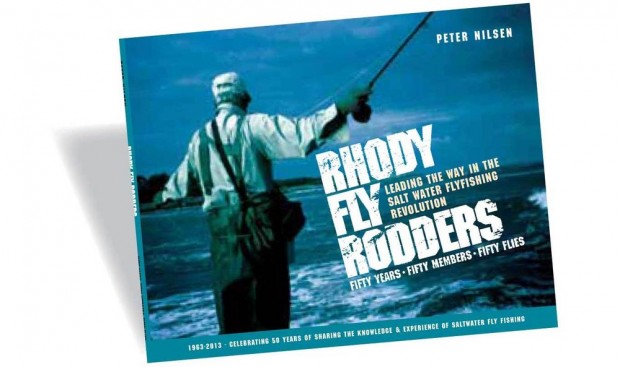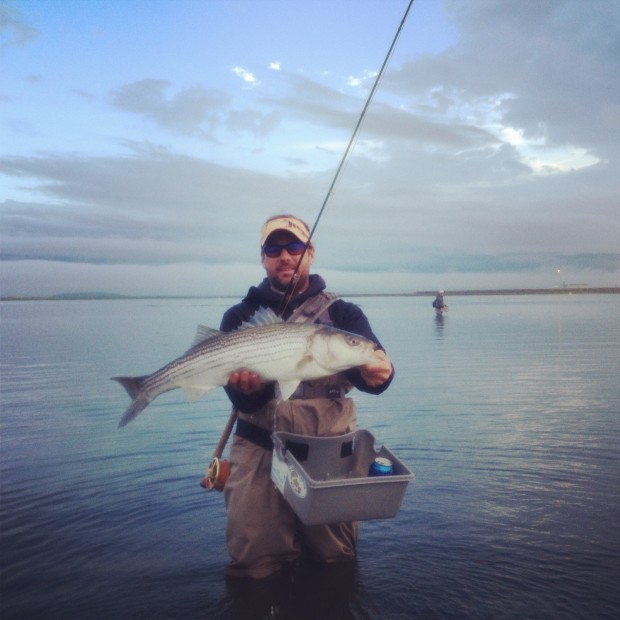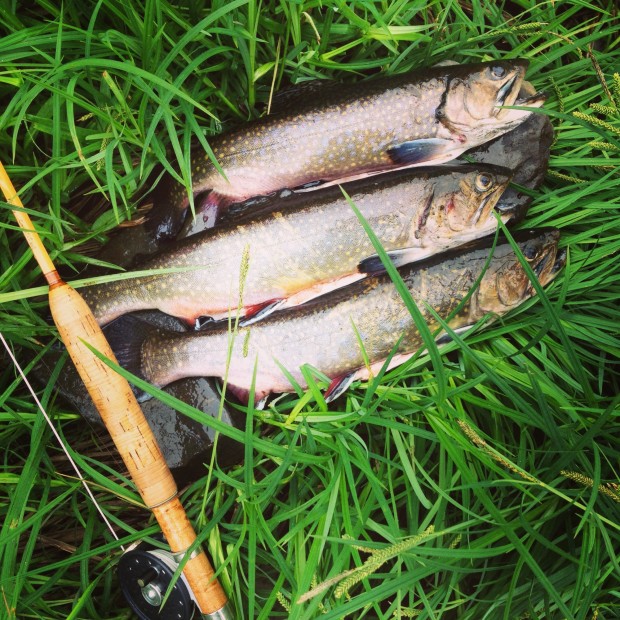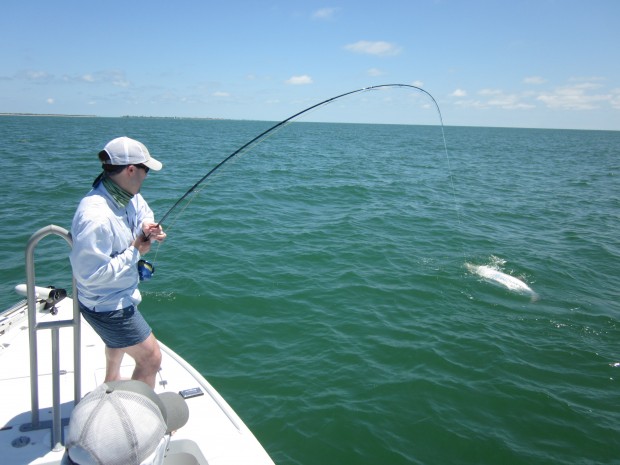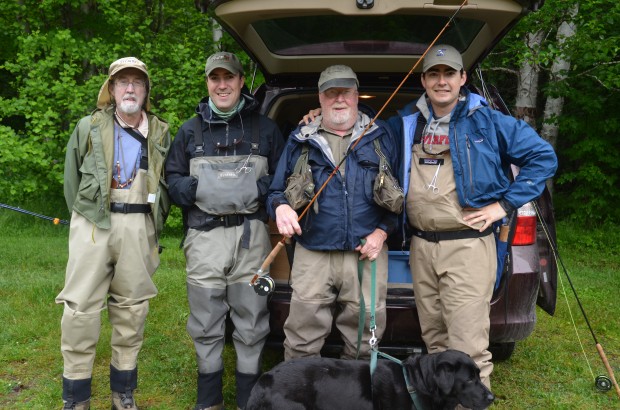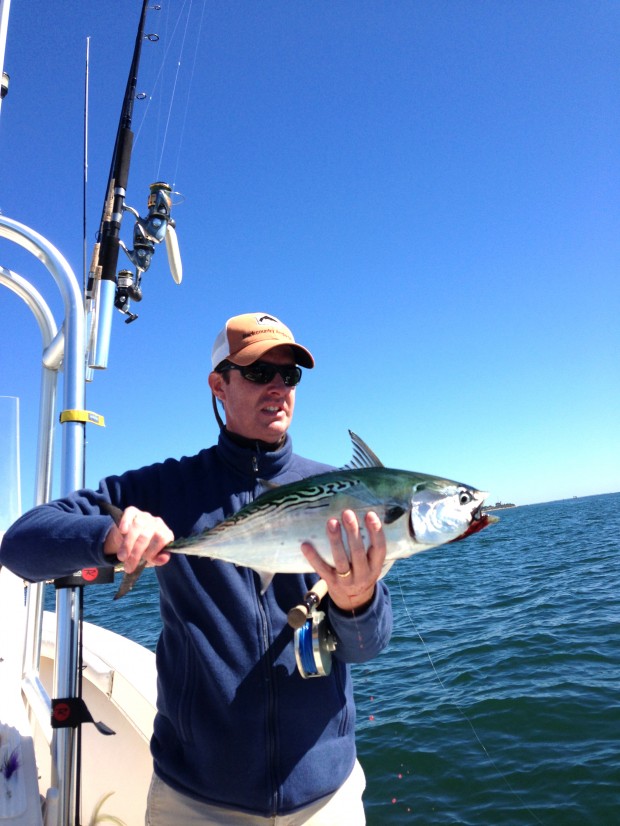2013 was a mixed bag. I was fortunate to have some great days on the water — including one of my best ever. But all of this was marred by persistent bad news about the continued decline of striped bass (more on that later). What follows is a short summary of some key trends, trips, and events from 2013. This is undoubtedly an incomplete list, so please add anything you think I’ve missed in the comment section below!
Penobscot River, Maine: Veazie Dam Removal
It’s always good to start on a high note, so I thought we’d start with the removal of the Veazie Dam. Located between Veazie and Eddington, Maine, on the Penobscot River, the Veazie Dam marks the point at which sea-run fish like Atlantic salmon have been stopped for nearly 200 years; while the Veazie itself was built in 19143, there are records of dams at this location dating back to the 1830s. It’s no wonder that the Penobscot, and all of its many tributaries, no longer boast the same numbers of migratory fish as they once did. The removal of the dam was scheduled to occur over two years (2013-14) but t the end of the 2013 construction year, there is ample passage for Atlantic salmon and other fish like striped bass, smelt, and others. This is nothing short of a tremendous success — one whose benefits fishermen in Maine will realize in the years and decades to come. It’s also an inspiring story for the other rivers across New England that remained dammed. It’s my hope that many of the rivers that remain dammed, and that once held strong populations of migratory fish, will be freed of their dams. As the NY Times said, “One phase of this nation’s environmental history was the building of thousands of dams for irrigation and hydropower. But we are in a new phase in which many of those dams, which always alter, if not destroy, the native ecosystem, are coming down.” Let us hope that momentum continues.
More resources:
Penobscot River Restortation Trust (some great videos and photos)
Portland Press Herald: “‘Ah, freedom’: Historic Penobscot dam removal begins”
Bangor Daily News: “Breaching of Veazie Dam begins as part of Penobscot River Restoration”
The Boston Globe: “Breaching of dam, restoring salmon’s passage unite many”
The New York Times: “Down Comes Another Dam”
Downeast River Salmon Stocking
Continuing the good news for Atlantic salmon restoration efforts in Maine is the project on the East Machais River in Maine. The project, modeled on the tremendous success of Peter Gray’s efforts to breed truly wild, resilient salmon on the River Tyne in Scotland, has moved ahead with the support of the Downeast Salmon Federation, together with the Atlantic Salmon Federation. This article in the Bangor Daily News, as well as the accompanying video, are fascinating. I know from talking with fisherman that many are hopeful that this technique will produce results. Check out the story, and keep an eye out for updates.
Tenkara Takes Off
I know, I know — tenkara fishing isn’t anything new. It dates back at least 200 years in Japan. But it’s adoption in the United States, largely led by Daniel Galhardo, founder of Tenkara USA, has happened quickly — very quickly. The minimalist, almost miniature, drive of tenkara runs counter to the sustained interest in big, powerful Spey rods. I’m interested to see where this trend goes, but in my observation 2013 was a watershed year for tenkara in the USA.
‘Rhody Fly Rodders’ ’50 Years • 50 Members • 50 Flies’
As America’s oldest saltwater fly fishing club, the Rhoddy Fly Rodders, a group based in Rhode Island, has published a book to celebrate their 50th anniversary. If you’d like a copy of the book, email Peter Nilsen at pdfish@fullchannel and he will email order form to you.
Striped Bass Numbers # Review
The plight of striped bass is nothing new to saltwater fishermen: much of the talk in recent years has been talk of their decline. New research, and action, reinforce shared concerns while giving some hope. Recent research shows that striped bass the spawning stock biomass (SSB) has declined continuously since 2004. Were that not bad enough, the Atlantic States Marine Fisheries Commission has decided to do nothing about it until 2015, a decision that has angered many (re. Monte Burke writing in Forbes). Meanwhile, the MD DNR has decided to increase the harvest by 14% in the Chesapeake Bay. Captain John MacMurray, writing on Reel-Time, has written extensively on the topic. While many are angry, John, among others, are proposing a voluntary limit of 1@32. Read up on this initiative here — and let’s hope that it does indeed have legs, as John suggests.
Reel Mergers: Orvis Acquires Ross Reels
For a few years now, I’ve been concerned about the majority of reels available to anglers. It seemed like more and more brand names were popping up, but offering nothing of distinction but for a lower price point. In my opinion, the reel market is a mess: but for a few makers that can produce quality at scale — Tibor, Abel, etc. — and for a few individuals making superior products by hand, the reel market is awash in cheap products. Most of the reels are made on the same lathe abroad, with simply a different template and a different color or decal applied to them. Hence, I was happy to see this merger between Orvis and Ross. I think the reel market could use, to borrow some management consulting jargon, some serious rationalizing. It’s a confusing, and confused, mess in need of clarity and quality. I don’t expect Orvis to provide this, but I would like to see some more action in the direction of simplifying this market.
Personal Trips
As I look back on 2013, I was extremely fortunate to have some great days on the water this year. Below are some shots from some of those days, as well as one from my dad.
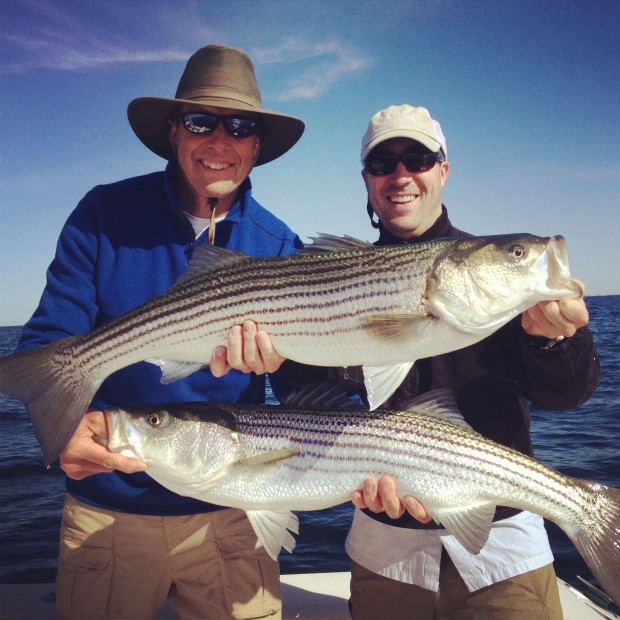
I then had one of the best days I’ve ever had saltwater fishing with my dad (pictured here) and guide Todd Fedele.
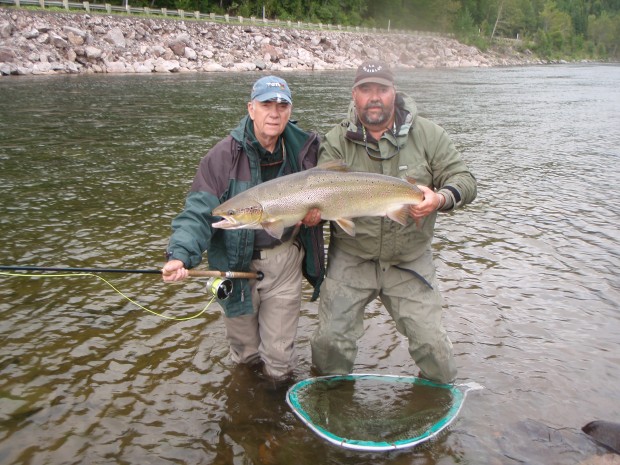
My dad caught this absolutely beautiful Atlantic salmon on the Grand Cacapedia with one of our favorite guides, Perry Coull.


